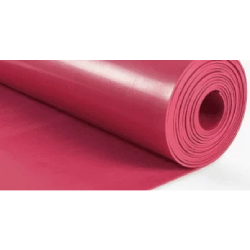Rubber linings are an essential component in various industrial applications, offering protection against harsh environments, chemicals, and wear. Whether you’re in chemical processing, mining, or water treatment, selecting the right rubber lining can be a game-changer for your equipment’s performance and longevity. With so many different types of rubber linings available, it can be difficult to know which is best for your specific needs.
This article discusses rubber linings, exploring what they are, the different types available, and how to choose the right one for your application. It also highlights the benefits of using rubber linings, the importance of regular maintenance, and how to get professional advice when selecting.
Understanding Rubber Lining
Rubber lining refers to the process of applying a layer of rubber to the surface of equipment, such as tanks, pipes, or vessels, to provide protection and enhance durability. This lining serves multiple purposes: it protects equipment from corrosion, abrasion, and chemical attacks, extends the lifespan of the equipment, and minimises the need for frequent repairs or replacements.
Rubber linings are used in a wide array of industries. Chemical processing involves dealing with corrosive substances that can damage equipment. Mining operations involve harsh chemicals and abrasives, and benefit from the durability that rubber linings offer.
Benefits of Rubber Linings
The benefits of rubber linings go beyond protection. They are designed to combat corrosion and abrasion, two of the most common threats to industrial equipment.
When you invest in the right rubber lining, you’re investing in the longevity of your equipment. Rubber linings extend the lifespan of tanks, pipes, and other critical assets by providing a barrier between the internal surfaces and harmful external factors. This results in fewer breakdowns, less downtime, and lower maintenance costs over time.
Types of Rubber Linings
Rubber linings come in various forms, each designed for different applications and environments. Let’s examine the primary types of rubber linings and their distinct characteristics.
A. Natural Rubber Linings
Soft Natural Rubber
Soft natural rubber linings are prized for their excellent flexibility and resistance to abrasion. These linings are used in environments where the equipment is subject to constant wear, such as slurry tanks and pipes. Their ability to flex and bend without cracking makes them ideal for situations where the rubber is under constant movement or pressure.
Hard Natural Rubber (Ebonite)
Hard natural rubber, also known as ebonite, is more rigid and offers high chemical resistance. It’s used for storage tanks that handle strong acids or other aggressive substances. While it may not be as flexible as soft rubber, ebonite’s durability in challenging chemical environments makes it the preferred choice for many industries that deal with corrosive substances.
B. Synthetic Rubber Linings
Synthetic rubber linings are engineered to meet specific performance criteria. Here are some of the most commonly used types:
-
Butyl Rubber
Known for its excellent chemical resistance, butyl rubber is effective at withstanding exposure to acids and alkalis. Its low permeability makes it ideal for use in acid plants or chemical storage tanks where the integrity of the lining is critical for maintaining environmental safety.
-
Neoprene Rubber
Neoprene is a versatile synthetic rubber known for its resistance to oils, chemicals, and weathering. This makes it a common choice for marine and outdoor applications. Neoprene linings are tough and can withstand the wear and tear associated with extreme environmental conditions, making them suitable for chemical exposure and physical stress.
-
EPDM Rubber
EPDM (Ethylene Propylene Diene Monomer) rubber is renowned for its exceptional resistance to heat, ozone, and various weather conditions. It’s used in water treatment plants, where equipment is exposed to chemicals and environmental elements. The high resistance to degradation means that EPDM linings can perform well in environments with fluctuating temperatures and varying moisture levels.
Selecting the Right Rubber Lining
Factors such as chemical compatibility, temperature range, and mechanical stress must be considered. For example, a lining that works well in a low-temperature environment might not perform as effectively at high temperatures. A rubber lining that offers perfect chemical resistance may not provide the necessary abrasion resistance in high-impact environments.
Maintenance and Inspection
Even the best rubber linings need regular maintenance. Over time, wear and tear can cause linings to degrade, resulting in leaks, reduced effectiveness, or catastrophic failures. This is why having a schedule for inspecting and replacing rubber linings is crucial.
Signs of wear include visible cracks, thinning, or bubbling on the surface. If you notice any of these symptoms, it may be time to replace the lining. Regular inspections can help identify problems before they become more severe, ensuring that your equipment remains safe and efficient.
Conclusion
Rubber linings serve as a protective layer for industrial equipment, providing an investment in durability, safety, and cost efficiency. Choosing the right rubber lining for your equipment is a critical decision that can significantly impact the longevity and performance of your machinery. Whether you’re working with soft natural rubber for flexibility or a synthetic option like neoprene for its weather resistance, there’s a rubber lining that’s right for your needs.
Do you want professional advice or assistance with rubber linings? Contact Australian Mining Products and Services today at 1300 241 620 for tailored solutions.

